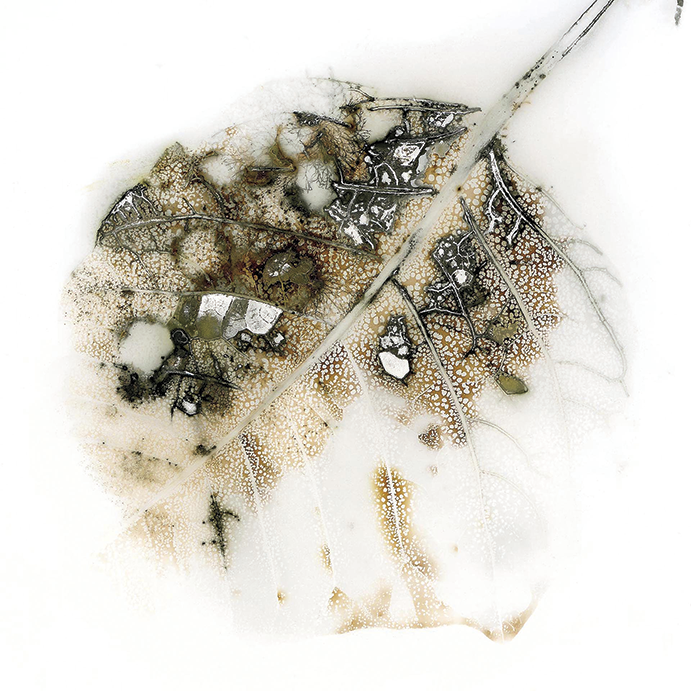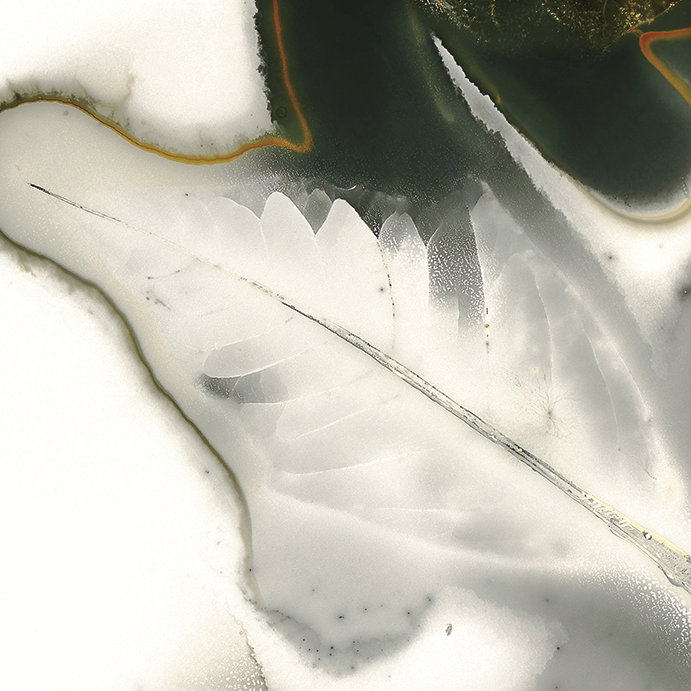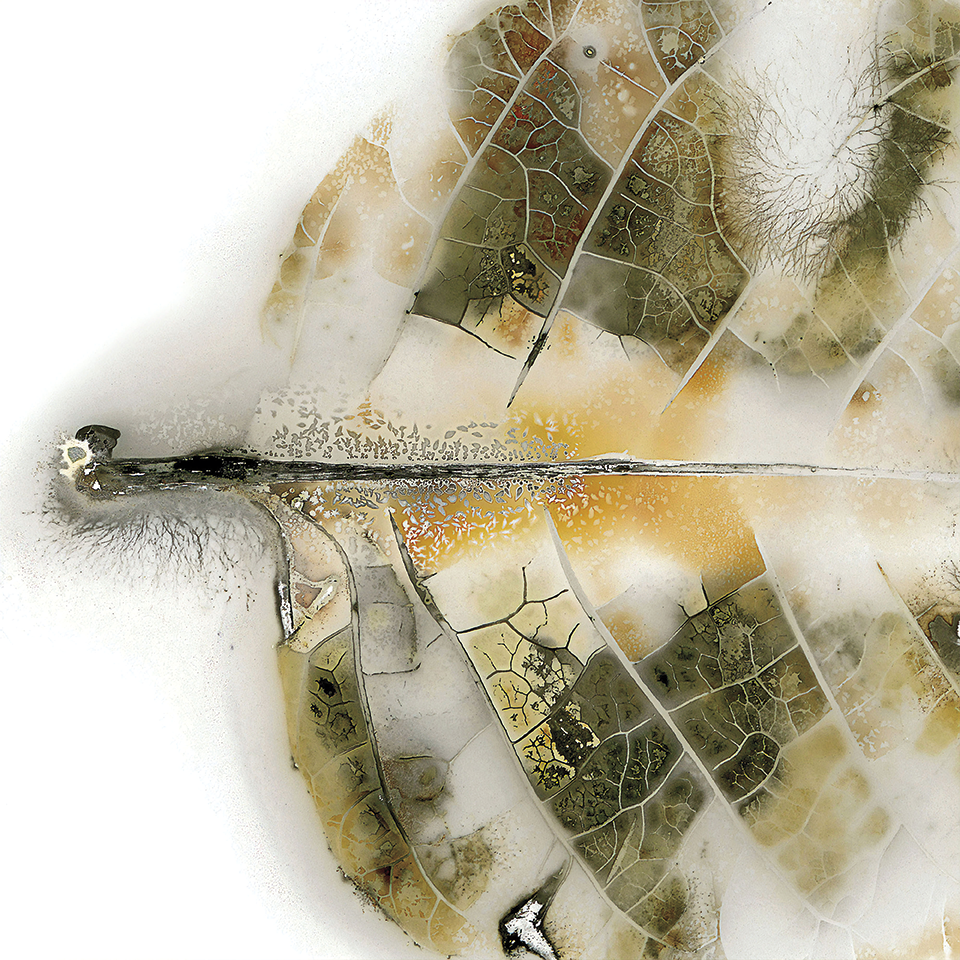Billions of years ago, ancient bacteria first evolved photosynthesis, a cellular revolution that transformed our planet’s atmosphere into one filled with oxygen. Today, plants use photosynthesis to capture sunlight and produce the chem-ical energy found in the food that fuels every organism on Earth.
In this stunning series of photographs, Edward Bateman MFA’03, associate professor in the Department of Art & Art History, has captured photosynthesis photographically. And he did it without direct interaction with light. Bateman placed leaves on light-sensitive photographic paper and then left them in total darkness for days or even months to document the change. “Leaves absorb sunlight and convert it to sugars, which they store in their structures,” he explains. “Removed from plants and trees, these leaves began a slow process of death.”
The images formed, he says, as the leaves broke down and leaked their stored light out to expose the paper. Bateman, whose printmaking and photography work has been shown in more than 25 countries, says this series is a new direction for him, one he says reflects his own aging process and sense of mortality. “For me, this is a shift from the virtual to the tangible as perhaps a way to hang on to the fleeting substance of life.”








Comments
Comments are moderated, so there may be a slight delay. Those that are off-topic or deemed inappropriate may not be posted. Your email address will not be published. Required fields are marked with an asterisk (*).